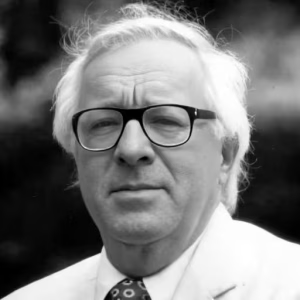
Ray Douglas Bradbury was born August 22, 1920, in Waukegan, Illinois—a place he would forever transmute into Green Town, Illinois, a shimmering echo of memory and longing that would recur throughout his work. He didn’t need the vastness of space to conjure worlds; he found them nestled within the familiar contours of childhood, the scent of burning leaves, and the quiet hum of Midwestern nights.
Bradbury wasn’t forged in academic halls, but in public libraries and the boundless theater of his own imagination. Formal higher education proved a fleeting interest, replaced by a voracious appetite for pulp magazines—those brightly colored portals to adventure that fueled his early dreams. He began writing at twelve, captivated by Buck Rogers and Flash Gordon, yet quickly moved beyond imitation, searching not just for excitement, but for stories that resonated with the deeper rhythms of the human condition—cloaked in the fantastic, but rooted in feeling.
He arrived on the literary scene not as a revolutionary, dismantling tradition, but as an evocateur. While contemporaries like Isaac Asimov built meticulously logical futures driven by technological advancement, and Robert Heinlein explored social commentary through rigorous extrapolation, Bradbury offered something different: poetry disguised as science fiction.
His prose wasn’t concerned with what could be, but with what it meant to be in a world rapidly changing, often for the worse. He didn’t chart courses for interstellar travel; he charted the perilous landscapes of the human heart. Though often shelved among the futurists, Bradbury himself insisted that Fahrenheit 451 was not a prediction, but a reflection of the present—of what he saw already happening.
Bradbury’s style is immediately recognizable—lyrical, almost dreamlike, steeped in metaphor and nostalgia. He wasn’t concerned with hard science or detailed engineering. Instead, his focus lay on the emotional impact of technology, the dangers of censorship (as powerfully illustrated in Fahrenheit 451), and the enduring power of memory. His stories weren’t cold calculations; they were warm breaths against the chill of an increasingly mechanized world. He wrote with a painter’s eye for detail, layering imagery to create atmospheres that lingered long after the final page was turned.
Consider his collection The Martian Chronicles, where the stark beauty of a newly colonized Mars is juxtaposed with the fragile hopes and inevitable disappointments of humanity; or the story Pillar of Fire, where the boundaries between life and death blur as a man continues to exist beyond his physical demise. Bradbury wasn’t simply crafting a ghost story; he was using this unsettling premise to explore the potent force of individual belief—and collective hatred—on the fabric of reality itself. The story suggests that deeply held beliefs—whether grounded in love or hatred—can exert a force all their own, capable of reshaping reality itself. These themes resonate with anxieties about societal memory, the persistence of prejudice, and the unsettling power of the human mind to overwrite perceived truth—a chilling exploration of thought as a tangible, almost destructive force.
His influence on subsequent generations of writers is undeniable. Authors like Neil Gaiman and Margaret Atwood acknowledge a debt to his ability to blend genre with literary artistry. He proved that science fiction wasn’t merely escapism, but a powerful tool for social commentary and profound philosophical inquiry. He didn’t just write about the future; he warned us about it, urging us to remember our past, cherish our humanity, and resist the forces that would diminish both.
Ray Bradbury passed away June 5, 2012, leaving behind a legacy as luminous and enduring as the stars he so often wrote about. He remains a vital voice—a chronicler of starlight and smoke—reminding us that even in the face of oblivion, the human spirit can still burn bright.